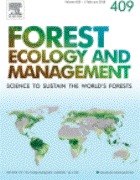Comparative investigations were undertaken in five forest fragments (Chawia, Fururu, Mbololo, Ngangao and Vuria) of varying sizes in Taita Hills, Kenya to examine the effects of forest edge on soil moisture, nitrogen,phosphorus, potassium, pH, electrical conductivity and organic carbon (hereafter referred to as environmental variables) along forest edge-interior gradient and relate them to tree species distribution and abundance. For each of the forest fragment, belt transects proportional to the forest area were established for data collection.Within each belt transect, plots of 10.0×10.0m were systematically established and replicated three times in astratum at an interval of between 10.0 and 50.0m along forest edge-interior gradient depending on the size of the forest fragment for assessment of environmental variables and tree species distribution and abundance.Results showed significant edge effect on the distribution and abundance of dominant and adaptable tree species i.e. Macaranga conglomerata, Albizia gummifera, Syzygium guineense, Xymalos monospora, Tabernaemontanastapfiana and Maesa lanceolata (p=.012). Edge effect was also noted among the following environmental variables; soil pH in Mbololo (p < .001), Ngangao (p < .001) and Vuria (p=.042), electrical conductivity(p=.048) and nitrogen (p=.038) in Fururu and potassium in Mbololo (p=.002) and Ngangao (p=.035). The distance from the forest edge influenced the distribution and abundance of 36.7% and 36.4% of most abundant species and less abundant species respectively. The environmental variables-tree species relationships established in this study could be utilized in selecting native tree species for rehabilitation programs to restore the degraded sites within the forest fragments.

